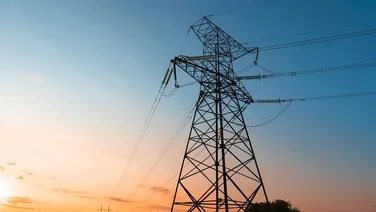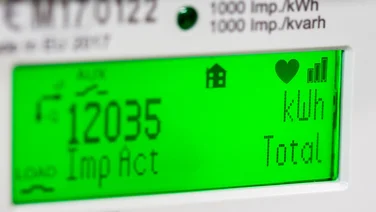- 20 companies have contributed to 35% of all energy-related carbon dioxide and methane worldwide since 1965.
- This totals 480 billion tonnes of carbon dioxide equivalent.
- In 2023, 100 companies were responsible for 71% of global greenhouse emissions.

Living sustainably is fast becoming a household priority. According to research and technology company, YouGov, 60% of the British public agree that climate change is the biggest threat to civilisation, and 21% are willing to invest more in products that favour sustainability.
For our 2024 National Home Energy Survey, we asked 2184 respondents from across the UK what factor would most influence their decision to utilise renewable energy sources, and 15% said environmental concerns.
Unfortunately, whilst many of us work hard to cut down our own carbon footprint, there are still companies out there pumping emissions into the atmosphere.
A report published by the Carbon Disclosure Project in 2023 suggests that just 100 companies are responsible for 71% of all global greenhouse emissions.
However, more recent statistics from the Corporate Governance Institute narrow that number down to 20 companies that have contributed to 35% of all energy-related carbon dioxide and methane worldwide since 1965, resulting in 480 billion tonnes of carbon dioxide equivalent.
We’re taking a look at the top 10 offenders, just how much they’re polluting the planet, and most importantly, if they’re doing anything to turn things around?
The most polluting companies in 2025
| Rank | Company | Billion tonnes of carbon dioxide since 1965 | Approximate number of employees |
|---|---|---|---|
| 1 | Saudi Aramco | 59.26 | 75,000 |
| 2 | Chevron | 43.35 | 45,000 |
| 3 | Gazprom | 43.23 | 498,000 |
| 4 | ExxonMobil | 41.90 | 61,000 |
| 5 | National Iranian Oil Co | 35.66 | 87,500 |
| 6 | BP | 34.02 | 100,500 |
| 7 | Royal Dutch Shell | 31.95 | 90,600 |
| 8 | Coal India | 23.12 | 228,800 |
| 9 | Pemex | 22.65 | 128,500 |
| 10 | Petróleos de Venezuela | 15.75 | 140,000 |
Data from various sites, including The Corporate Governance Institute, The Climate Accountability Institute, and company annual reports
1. Saudi Aramco

Company summary: Petroleum and natural gas
Based in: Dhahran, Saudi Arabia
Founded: 1933
Carbon emissions since 1965: 59.26 billion metric tons or the equivalent of 10,122,992,825 flights between London, England and Sydney, Australia.
“From continuously improving operational efficiency and the environmental performance of our facilities, to pursuing low carbon energy solutions, and strategically investing for growth, we view sustainable practices as the best way to ensure our business remains viable for the long-term.”
And yet, Saudi Aramco has totted up the largest overall sum of CO2e emissions in the world since 1965, now sitting at a horrifying 59.26 billion tonnes. This company alone has contributed to about 4.4% of the world’s total carbon dioxide and methane emissions in the last 50-60 years.
Aramco is also expected to lead the growth in fossil fuel production up to 2030 – it’s estimated that the company will produce 4.7% of the world’s ‘carbon budget’, which is how much CO2e our planet can produce if we want to keep global temperatures from rising 1.5C above pre-industrialised levels.
Aramco has pledged to reduce carbon dioxide emissions from their oil and gas production processes by 13% by 2025 but are facing greenwashing allegations.
2. Chevron

Company summary: Oil and gas
Based in: California, United States
Founded: 1879
Carbon emissions since 1965: 43.35 billion metric tons or the equivalent of 7,405,193,030 between London and Sydney.
“We proactively consider climate change risks and opportunities in our business decisions. We have the experience, processes, and governance in place to manage these climate risks and opportunities.”
Sounds like a very environmentally conscious company, right? Unfortunately not. Chevron pumps out nearly 250,000 barrels of crude oil each day. Just two years ago, the company had to pay $9.5 billion for the repair of the social and environmental damage after a court found that Chevron deliberately dumped billions of gallons of toxic oil waste in the Amazonian provinces of Sucumbíos and Orellana.
And when Chevron ‘flares’ (i.e. burns unwanted gas), dark smoke spirals up and across California – this alone led to more than 15,000 people in California seeking treatment in 2012 for respiratory distress after a factory fire.
Chevron was also one of the oil firms targeted in a campaign by the Union of Concerned Scientists in the US to “stop funding climate disinformation”.
The company has targets to reduce methane emissions from its operations, aiming for a 53% reduction by 2028, and it also involved in projects relating to carbon capture and storage.
3. Gazprom

Company summary: Oil and gas
Based in: Moscow, Russia
Founded: 1989
Carbon emissions since 1965: 43.23 billion metric tons or the equivalent of 7,384,694,226 flights between London and Sydney.
Gazprom released 62.55 million tonnes of CO₂ and 22.51 million tonnes of methane in 2023, and out of the combined 85.06 million tonnes, 26.98 million tonnes were from fugitive emissions – unintentional leaks during extraction and transportation. It also saw a 7.4% increase in methane emissions from 2022 – 2023.
In 2022 at Gazprom’s Portovaya plant, the company was found flaring approximately 4.34 million cubic meters of gas daily, or 9,000 tonnes of CO₂. Environmental experts called the situation an “environmental disaster.”
It has since employed mobile environmental laboratories equipped with advanced analytical tools and unmanned aerial vehicles (UAVs) to monitor atmospheric emissions and detect methane leaks, but this is only significant in reducing accidental emissions. It has also implemented measures to minimize its impact on water resources. Otherwise, little effort has been made to rectify environmental impact.
4. ExxonMobil

Company summary: Oil and gas
Based in: Texas, United States
Founded: 1999
Carbon emissions since 1965: 41.90 billion metric tons or the equivalent of 7,157,499,145 flights between London and Sydney.
“Our actions to address the risks of climate change are prioritized under the four pillars: mitigating emissions in our operations, providing products to help our customers reduce their emissions, developing scalable technology solutions, and engaging in climate change policy.”
It was clear that Exxon had betrayed its very own principles back in 2015, when research revealed that the company had known about the causes and dangers of climate change since the 70s. Rather than taking action, Exxon spent decades pouring millions of dollars into disinformation campaigns designed to mislead members of the public.
In fact, Exxon has spent more than $30m over 30 years on think tanks that have promoted climate denial.
They are now pursuing up to $30 billion into lower-emission investments between 2025-2030, but it’ll be half a decade before we will see any positive change.
5. National Iranian Oil Company (NIOC)

Company summary: Government-owned national oil and natural gas
Based in: Tehran, Iran
Founded: 1948
Carbon emissions since 1965: 35.66 billion metric tons or the equivalent of 6,091,561,325 flights between London and Sydney.
This once-thriving province of Khuzestan has been transformed into a wasteland, where the skies are smeared with pollution and dust storms continuously smother towns.
The cause? Iran’s production of 4 million barrels of oil per day, and the flaring of around 39 million cubic metres of gas across the country. However, when people started to point fingers at the company for its impact on the toxic air pollution levels, Bijan Aalipour, director of the National Iranian South Oil Company (a subsidiary of NIOC), said:
“Putting all the blame on NIOC for the air pollution is nothing but a baseless allegation. We do not deny that oilfield activities generate pollution, but it is not as serious as they say.”
As of 2025, NIOC has no climate strategy and is not investing in low-carbon technology or ways to mitigate its environmental impact.
6. BP

Company summary: Oil and gas
Based in: London, United Kingdom
Founded: 1909
Carbon emissions since 1965: 34.02 billion metric tons or the equivalent of 5,811,411,001 flights between London and Sydney.
“We understand that people around the world are increasingly concerned about air quality and its impact on public health. We monitor our air emissions, and put measures in place to reduce the potential impact of our activities on local communities.”
For many, these words will be overshadowed by the 2010 Deepwater Horizon rig explosion – which sent 206 million gallons of oil from BP’s Macondo well spewing into the Gulf of Mexico for 87 days. The spill killed 11 workers and millions of marine creatures – triggering one of the worst environmental disasters in US history. At its height, 88,522 square miles of sea were closed to fishing because of the spill. A decade later, many species are still struggling in the area.
More recently, environmental lawyers have complained about BP’s greenwashing advertising campaign, which portrayed the oil company in a sickly sweet light when it comes to the environment.
Bp has pledged to address environmental concerns and are reducing Scope 1 and 2 emissions, which were 38% lower in 2024 compared to 2019 – but claims are taken with a pinch of salt.
7. Royal Dutch Shell

Company summary: Oil and gas
Based in: The Hague, Netherlands
Founded: 1907
Carbon emissions since 1965: 31.95 billion metric tons or the equivalent of 5,457,806,627 flights between London and Sydney.
Shell has let down environmentalists constantly. In 2015, the energy company splashed roughly $22 million on lobbying activities against climate policies. Shell has also dumped roughly 1.5-2 million tonnes of waste into Busca Bay in Willemstad, which, to this day, is known as Asphalt Lake. And, in light of these transgressions, Shell has been aware of the impact fossil fuels can have for over 30 years.
To redeem itself, in 2019 Shell announced a $300m fund to invest in natural ecosystems over the next three years. However, this positive news is quickly washed away when you compare it with Shell’s annual income of $24bn. 1.25% of profit goes to the environment and 98.75% goes into the investment of fossil fuels.
8. Coal India (CIL)

Company summary: Coal
Based in: Kolkata, India
Founded: 1975
Carbon emissions since 1965: 23.12 billion metric tons or the equivalent of 3,949,436,282 flights between London and Sydney.
Coal India is the world’s largest coal-producing company and a state-owned enterprise under the Ministry of Coal. It supplies 74% of India’s coal output. In 2022, India emitted over 2.7 billion tonnes of CO2, with the coal sector being the largest contributor. CIL’s dominance in the domestic supply means it has a lot to answer for.
The company has recently initiated a strategic shift towards cleaner energy, including the commissioning of a 50 MW solar power plant at Nigahi, which is its largest to date.
It has also committed to installing 3,000 MW of solar power capacity by 2026 and is working with the Indian Council of Forestry Research & Education (ICFRE) and Dehradun for Environmental Audit of OC Mines to meet sustainable standards.
9. Petróleos Mexicanos (Pemex)

Company summary: Mexican state-owned petroleum, oil and gas
Based in: Mexico City, Mexico
Founded: 1938
Carbon emissions since 1965: 22.65 billion metric tons or the equivalent of 3,869,149,299 flights between London and Sydney.
Pemex is a cornerstone of Mexico’s energy sector and economy but infrastructure issues have exacerbated environmental challenges. Crucial repairs and maintenance on the Zaap-C offshore platform were delayed, leading to significant methane leaks and increased co2 emissions. It was later discovered that Pemex had known about these issues since 2022, but they weren’t repaired until after the incident, in 2024.
In an attempt to make amends, Pemex approved its first Sustainability Plan with the goal of net-zero emissions by 2050, including a 30% reduction in methane emissions and the elimination of routine gas flaring by 2030.
It has also announced plans to invest US$2 billion to reduce methane gas emissions by up to 97% in oil and production processes, and has improved its standing in the Net Zero Company Benchmark by achieving 7 out of 11 indicators, up from 1 in 2023.
10. Petróleos de Venezuela (PDVSA)

Company summary: Oil
Based in: Caracas, Venezuela
Founded: 1976
Carbon emissions since 1965: 15.75 billion metric tons or the equivalent of 2,690,468,056 flights between London and Sydney.
PDVSA is commonly associated with oil spills, primarily due to aging infrastructure and inadequate maintenance. In 2022 alone, There were 86 combined oil spills and gas leaks in 2022 alone, an increase from 77 in 2021, which have threatened marine ecosystems in the Caribbean and Lake Maracaibo.
In 2020, the El Palito oil spill leaked approximately 25,000 barrels of oil into the Triste Gulf, reaching Morrocoy National Park and causing significant environmental damage.
PDVSA hasn’t published data on its oil spills since 2016. Its lack of transparency makes it challenging to assess the full extent of environmental damage and hinders mitigation efforts. While the company has pledged to reduce gas flaring and methane emissions, it has not provided detailed strategies or timelines for these goals.






